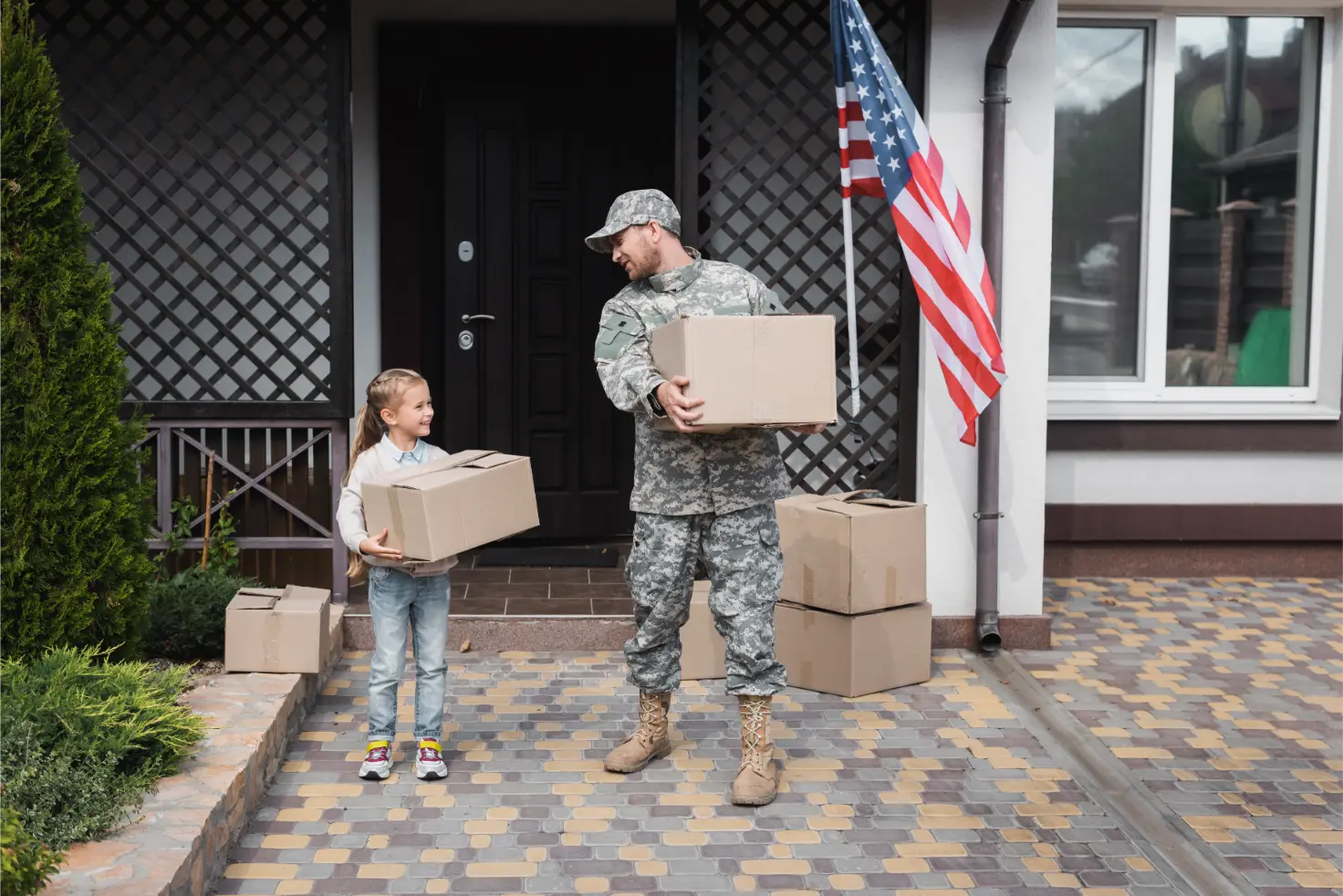How Moving Companies Handle Pet Transportation During a Move
How do moving companies handle the transportation of pets during a move? This is a common concern for pet owners planning to relocate. This article will provide an in-depth look at the particulars of moving with your four-legged companions, guaranteeing their safety and contentment all through the process.
We’ll begin by exploring the services offered by moving companies when it comes to pet transportation, including any additional fees involved, and the types of pets that can be transported. Next, we’ll discuss how you can prepare your pet for the move – from vet check-ups and vaccinations, to creating a safe space during transit.
Researching State Laws and Moving Company Policies
Before relocating with your pets, it is essential to research state laws, and moving company policies regarding pet transportation. Familiarize yourself with any regulations in your new home that may affect them such as leash laws, licensing rules, limits on the number of pets per household, and zoning laws prohibiting specific animals in residential areas.
Understanding state-specific requirements for pet transportation
Different states have varying requirements when it comes to transporting pets during a move. Some states require health certificates or proof of vaccinations before allowing entry. To avoid any issues on moving day, make sure you understand the state-specific requirements for pet transportation well ahead of time.
- Vaccinations: Ensure your pets are up-to-date on their vaccinations before traveling across state lines.
- Rabies Certificate: Many states require a valid rabies certificate from a licensed veterinarian within a certain timeframe prior to entry.
- Pet Health Certificate: Some states mandate an official health certificate signed by a licensed veterinarian, confirming that your pet is free from contagious diseases.
Inquire about your moving company’s experience with handling pets
Finding the right moving company is crucial when you’re moving long distance with furry friends. When researching potential movers, ask about their experience in handling pets during relocation. A reputable mover should be able to provide information on how they ensure the safety and comfort of your four-legged family members throughout the journey. For example:
- Steer clear of putting animals in the freight section of a moving van, as this could be hazardous for them.
- Ask if they have any special equipment or procedures to keep pets safe during transport.
- Inquire about their experience with different types of animals and breeds, to ensure they are well-equipped to handle your specific pet’s needs.
Taking the time to research state laws and moving company policies will help you find the best solution for transporting your beloved pets safely. Remember that proper planning is key when it comes to ensuring a smooth transition for both you and your furry companions on moving day.
It is important to research state laws and moving company policies before planning a move with pets, as these can vary from place to place. Adequate readiness on your part and that of your pet will guarantee a tranquil transition.

Preparing Pets for the Move
When preparing for a move with pets, it is crucial to ensure their comfort and safety during transit. This involves acclimating them to their travel crate or cage, packing essential items like food bowls and grooming equipment, and planning ahead for food supplies and bathroom breaks. By following these steps, you can help reduce stress on your furry friends during moving day.
Acclimating Your Pet to Its Travel Crate or Cage
To minimize anxiety while moving long distance, start by getting your pet accustomed to its travel crate or cage well before moving day. Introduce the crate gradually by placing treats inside and allowing your pet to explore at its own pace. Once your pet is comfortable entering the crate voluntarily, practice closing the door for short periods of time until they become used to being confined in it.
Packing Essentials Like Food Bowls and Grooming Equipment
- Food: Pack enough of your pet’s regular food supply for several days beyond what you anticipate needing during transit. This will ensure that if there are any unexpected delays, your pet doesn’t go hungry.
- Grooming Supplies: Bring along necessary grooming tools such as brushes, combs, nail clippers, shampoo/conditioner (if needed), etc., so that you can maintain proper hygiene throughout the journey.
- Bathroom Breaks: Plan stops along your route where you can safely let out pets from their crates/cages; this allows them some fresh air as well as an opportunity to relieve themselves in parks, and other applicable areas.
- Water: Carry enough water from home to last throughout the entire trip. Changing your pet’s drinking water suddenly can lead to stomach upset, so it is best to keep them on familiar sources during transit.
By taking these steps and ensuring proper ventilation in the moving truck, you can help make sure that your pets are safe and comfortable during their journey to a new home. Remember that keeping stress levels low for both you and your pet will make the transition smoother for everyone involved.
Proper preparation for your pet’s move is essential to ensure a smooth and stress-free experience. To make sure that all the necessary arrangements are taken care of, it’s important to secure pet-care during transit.
Securing Pet-Care During Transit
As you plan your move, it’s essential to secure pet-care several weeks in advance so that everything goes smoothly once moving day arrives. This includes booking hotel accommodations for you and your furry friends during the journey. To ensure a comfortable and stress-free experience for both you and your pets, make sure to pack all necessary items including health records from the veterinarian, water from home (to avoid stomach upset), medication, along with enough regular food to last throughout the entire trip (plus a few extra days’ worth just in case something goes wrong).
Booking hotels that are pet-friendly
Finding pet-friendly hotels can be challenging when moving long distance; however, there are resources available online to help simplify this process. Websites like BringFido allow users to search for accommodations based on their specific needs – such as size restrictions or additional fees associated with bringing animals into rooms – making it easier than ever before. Be sure also check out reviews left by other travelers who have stayed at these establishments previously, to get an idea of what to expect upon arrival.
Ensure you have updated health certificates from your vet ahead of time
- Contacting your current veterinarian well in advance of the move is crucial, since they will need ample time to provide any necessary vaccinations or treatments required by state laws.
- If traveling across state lines or internationally, obtaining a valid health certificate issued within ten days prior departure date may be mandated depending on destination country regulations. Make sure you consult local authorities regarding specific requirements related to transporting pets across borders.
- In addition, it’s essential to have copies of your pet’s medical records on hand during the move. This will help ensure that you can provide accurate information about their health history if needed, while en route or upon arrival at your new home.
By organizing ahead of time and maintaining that organization during the move, you can ensure your pet’s safety and comfort as they join you in a new location.
Securing pet-care during transit is a key component of ensuring your furry family members arrive safely at their new home. Making sure your pets are secure and content during the move necessitates taking measures to safeguard them while in transit.

Keeping Your Pets Safe During Transportation
To keep stress levels low throughout this process – especially since many people find relocation quite overwhelming – try breaking out some old favorites when packing up. Keeping bedding materials consistent between homes helps maintain familiarity amidst otherwise chaotic surroundings. This might otherwise cause anxiety among sensitive creatures like dogs who rely heavily upon routine comforts such as their favorite toys, blankets etc.
Maintaining a familiar environment for your pets during the move
To ensure your pet’s wellbeing and contentment during the move, it is recommended to preserve their accustomed environment. This can be achieved by:
- Packing their favorite toys, blankets, and other personal items in the moving truck or car with them.
- Using their regular food bowls and water dishes so they don’t have to adjust to new ones while traveling.
- Providing them with plenty of opportunities for bathroom breaks and exercise at rest stops along the way.
Ensuring proper conditions inside vehicles
The vehicle you use for transporting your furry friends should also meet certain requirements that will help keep them safe and comfortable:
- Ventilation: Adequate ventilation is crucial for keeping pets safe during transport. Make sure there are enough windows open or air conditioning running to provide fresh air without causing excessive drafts or temperature fluctuations.
- Temperature control: Take temperature fluctuations into account when planning a long-distance move and have appropriate heating or cooling options ready depending on the season. Be prepared with heating or cooling options depending on whether you’re moving in hot summer months or cold winter weather. Never leave pets unattended in a parked car, as temperatures can quickly become dangerous.
- Secure a travel crate or carrier: Your pet’s safety is paramount during transportation. Ensure their travel crate or carrier is secure and properly sized for them. Check out this guide on how to choose the right size of a travel crate for your pet.
Securing the right-sized travel crate or carrier for your pet will make it simpler to transition into a new home, providing both you and them with greater ease and comfort.
Air Travel and Other Transportation Options
Flying with your pet may be the most expeditious way to get them across long distances, yet it is critical to acquaint yourself with airline regulations, and consider alternate solutions like specialized animal transport services, if necessary. It’s essential to understand airline requirements for pet transportation and explore alternative options like professional pet transportation services if needed.
Understanding Airline Requirements for Pet Transportation
Different airlines have specific rules and regulations when it comes to transporting pets. Generally, pets must be at least 8 weeks old and weaned before they can fly. Additionally, their kennels need to meet minimum standards for size, strength, sanitation, and ventilation while also having rims that prevent the openings from being blocked by other cargo in the cargo area of a plane. It’s crucial to research each airline’s pet policies well ahead of your moving day so you can prepare accordingly.
Exploring Alternative Options Like Professional Pet Transportation Services
If air travel isn’t suitable or available for your pets during relocation or if buses and trains are not an option (as they typically do not transport pets unless they are medical service animals); consider using a professional pet transportation service instead. These companies specialize in safely relocating animals via ground or air transport with trained staff who ensure your pets’ safety throughout the journey.
- Pet shipping services: Some companies focus solely on shipping pets across states, or even internationally through commercial flights as cargo or accompanied baggage.
- Pet taxi services: For shorter distances within a state or city limits where driving is more feasible than flying; these providers offer door-to-door pick-up/drop-off services, specifically designed with animal welfare in mind.
- Private pet transport: For those seeking a more personalized and luxurious experience, private pet transportation services offer customized travel plans tailored to your pet’s specific needs.
To find the best option for you and your pets, research various providers online by reading reviews from previous customers or asking friends who have used similar services. Additionally, consult with your veterinarian for recommendations on reputable companies they trust.
Moving pets as you relocate can be complicated, so it’s important to understand the requirements of airlines and maybe explore alternative transportation options. Additionally, updating pet identification before moving will help ensure your furry friends are safe and secure throughout their journey.

Updating Pet Identification Before Moving
It is essential to have your pet’s identification up-to-date before moving. If your pet can wear a collar, attach an ID tag with your new address and phone number. Microchips provide additional security if your pet gets lost during the move; however, it is still advisable to carry recent pictures of them so you can show neighbors or local authorities if needed.
Attaching updated ID tags on collars
An important step in preparing for a move with pets is ensuring their identification information remains current throughout the process. One simple way to do this is by attaching an updated ID tag to their collar that includes both your new address and phone number. This will make it easier for anyone who finds your furry friend wandering around unfamiliar territory after moving day to return them safely home.
Considering microchipping for added security
In addition to updating traditional forms of identification like collars and tags, many pet owners opt for microchipping their pets. A microchip implant provides permanent identification that cannot be removed or altered easily – making it an invaluable tool in reuniting lost pets with their families quickly, when they go missing during moves or other situations where they might become separated from you.
- Contact Information: Make sure the contact information associated with the microchip is up-to-date prior to moving long distance.
- Veterinary Records: Keep copies of all veterinary records handy as well – including vaccination history, any special dietary needs, and medications your pet may require.
- Recent Photos: Carry recent photos of your pets with you during the move. These can be helpful in case they get lost or separated from you, allowing neighbors or local authorities to identify them more easily.
Taking these precautions will help ensure that if your pet does become lost while you’re moving, there is a greater chance they will be found and returned safely to their new home. Remember that even with updated identification methods like microchips, it’s still essential to keep an eye on your pets at all times during the move – especially when loading and unloading items from the moving truck.
Conclusion
In conclusion, moving with pets can be a challenging experience, but with the right preparation and assistance from professional movers, it can be made much easier. Moving companies offer various services for transporting pets safely during a move, including additional fees for specialized care and handling.
It is vital to make sure your pet is ready for the move by arranging a vet appointment, collecting required supplies and documents, creating an area that’s secure while relocating, and helping them adjust to their new surroundings. If you plan on flying with your pet during your move, research airline regulations and restrictions beforehand and choose an appropriate carrier or crate.
If you’re looking for reliable movers who specialize in pet transportation services during moves of all types (intra-state, inter-state or international), contact Star International Movers today!














